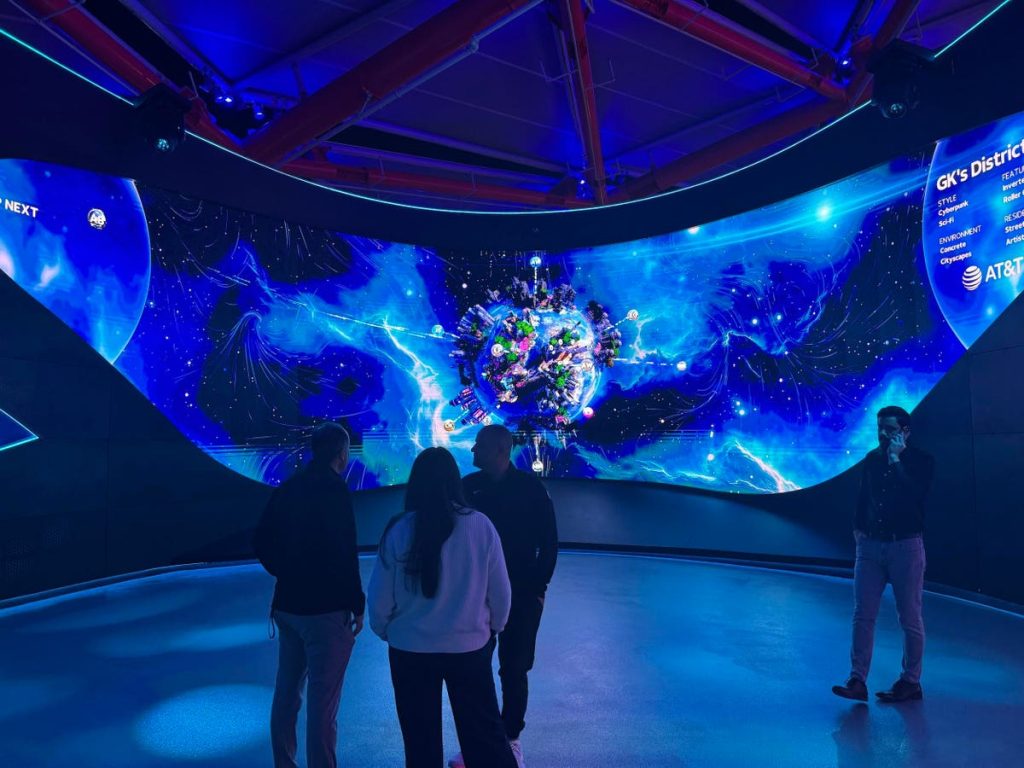I’m not much of a basketball fan, but I love technology. So when the Clippers invited me to tour the new Intuit Dome with George Hanna, their chief technology and digital officer, I was all in. Hanna runs what might be the most advanced building in professional sports. He’s an engineer by training, formerly with Disney and Toyota, and he talks about arenas the way coders talk about operating systems. “This building is hardware,” he said, “and it’s all built on software.”
The $2 billion Intuit Dome opened in Inglewood in August 2024. Designed by AECOM, it’s a 17,800-seat venue with five basketball courts, a public plaza that includes an outdoor court open on off days, and the steep “Wall” section of 51 uninterrupted rows reserved for die-hard Clippers fans. Its LED “Halo Board,” a double-sided ring display with 230 million pixels, runs in Unreal Engine and reacts to the crowd in real time. “We’ve mapped every pixel to every seat,” Hanna said. “When fans start cheering, the board heats up and changes color.”
Every ticket, concession, and camera feed connects through a single fiber network. Hanna calls it a one-to-one relationship between fan and system. Facial recognition gates replace scanners, and the “Pick and Roll” markets use ceiling cameras and AI vision to identify what fans grab and charge their accounts automatically. “If the software fails,” Hanna said, “we err on the side of the fan. We don’t charge you.”
Infrastructure is important, of course, but it was the Connectopia, in particular, created by Luminary Design for AT&T, on the top level, that caught my eye. It’s part artwork, part demonstration of generative AI.
“Connectopia is an AI world-building experience,” Luminary founder Brian Bate told me. “You choose words that describe your world, and our system turns that into an 8K cinematic environment in seconds.” Luminary, a Louisiana-based design and fabrication studio, builds immersive environments that fuse architecture and computation. For this project, they created a closed generative pipeline entirely local to the arena.
Behind the walls, Bate’s team installed a bank of RTX 4090 and 5090 GPUs linked by AT&T Fiber. Each fan’s word choices feed Gemma, a large-language model that expands the prompt into a detailed narrative. That text drives an image generator built on LTX, which produces three alternate stills, then animates them with diffusion models into short video clips. “We run three rounds of AI upscaling,” Bate explained. “GAN, Nvidia 2.X, and diffusion. Each has a different flavor. Mixed together, they get us to 8 to 10K resolution in real time.”
Those clips are stitched and composited in Unreal Engine, forming what Bate calls “a living organism—a collaborative piece of digital art.” Every visitor’s world blends into a single ever-changing panorama that plays across a giant 8K LED wall. The top creations appear on the Halo Board during the game.
“We built it modularly,” Bate said. “AI moves so fast that we knew the system had to evolve. We update the models every two weeks.” Luminary also designed custom safety filters and trained control LoRAs to prevent offensive or unstable outputs. “There’s no pre-approved library,” Bate said. “Everything is generated live. No one has ever seen these worlds before, and they’ll never look the same again.”
Back downstairs, the Thunder punished the Clippers. The Dome’s promise of data-driven advantage wasn’t helping the score. The game was forgettable, but Tuesday at the Inuit Dome, the technology was the show.
Read the full article here










